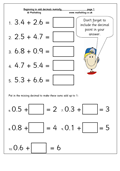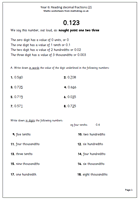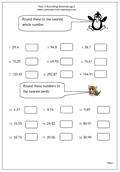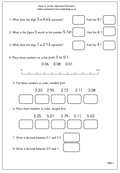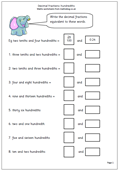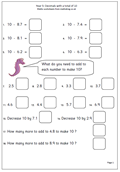 Here we have mental arithmetic maths worksheet on decimals, most suitable for Year 5. This page looks at pairs of decimals that make 10. Once again there are several ways of tackling these questions.
Here we have mental arithmetic maths worksheet on decimals, most suitable for Year 5. This page looks at pairs of decimals that make 10. Once again there are several ways of tackling these questions.
One way is to add on from the smaller number, firstly, the tenths to make the next whole number, and then the units to make 10.
eg 10 – 6.7
Count on from 6.7 to 7 which is 0.3
Then count on from 7 to 10 which is 3
Answer 3 + 0.3 = 3.3
Another way is to count on the units first and then the tenths, but beware the answer which counts on 4 from 6 to make 10 and than counts on 0.3 as this will result in an answer which is one too many: a common slip-up.
Another way of doing this is to ignore the decimal and think of the question as 100 – 67. Work it out mentally (which is 33) and then convert back to 3.3.
